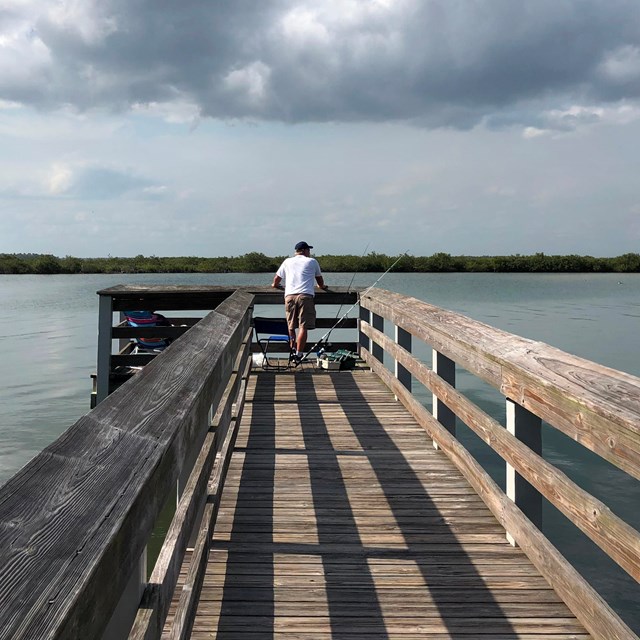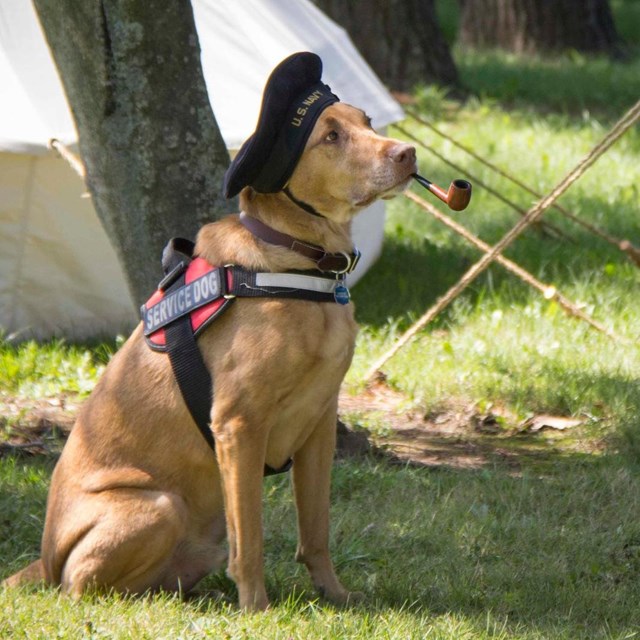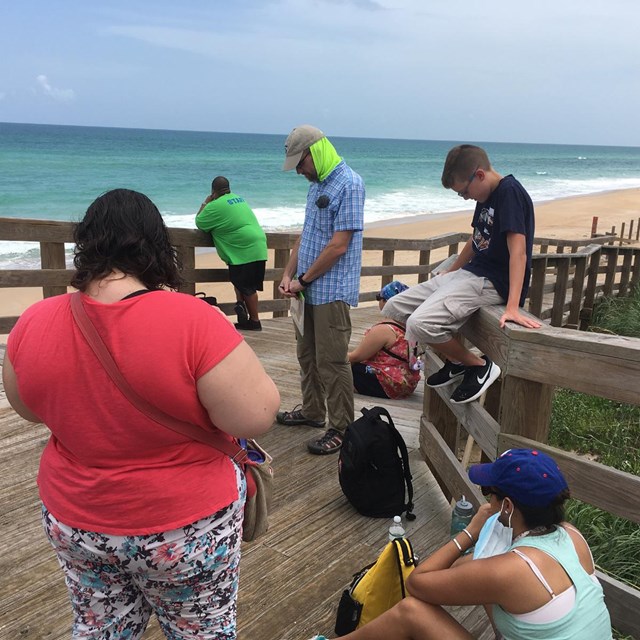The Access PassDid you know you may qualify for the person's with disabilities FREE lifetime Access Pass? This pass provides access to hundreds of federal recreational areas across the country. It provides access for the cardholder and any others in their vehicle into Canaveral National Seashore.Accessibility Page Options You may choose any of the following links if there is something specific you are looking for. Otherwise, continue scrolling down the page to see all of the content in long form that is located on the links.
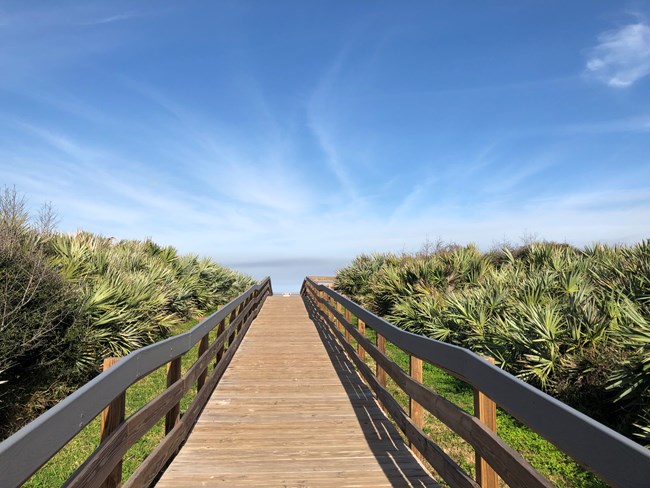
NPS/Photo Apollo BeachParking Areas one through five provide wheelchair accessible entry onto the beach and accessible parking spaces are located at the front of each ramp. The ramps are flush with the parking lot and range from flat to having slight incline leading to the beach. Once at the top of the ramp there will be a platform to stop and enjoy the sea breeze where an informational interpretive sign may be present. There may be a slight decline leading to the sand, but some ramps traverse if the dunes are tall. 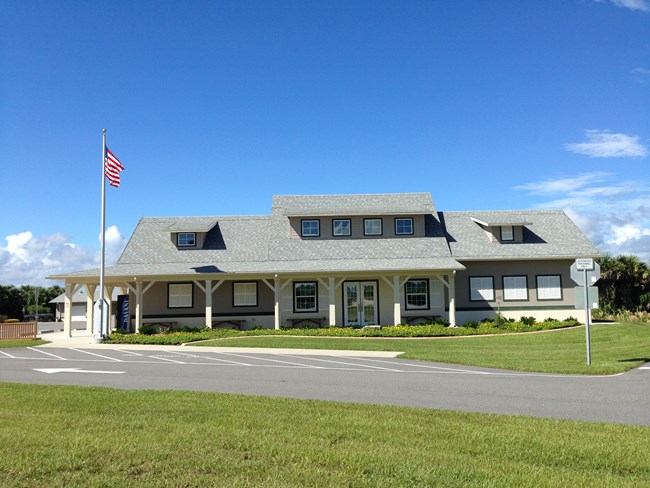
Nps/Photo The Apollo Beach Visitor CenterThe Apollo Visitor Center is located at Apollo Beach. Upon entering there are interpretive displays, a gift shop, and a large auditorium for enjoying the park video that is closed captioned. The entire building is accessible by wheelchair as well as the pavilion and the dock behind the visitor center. 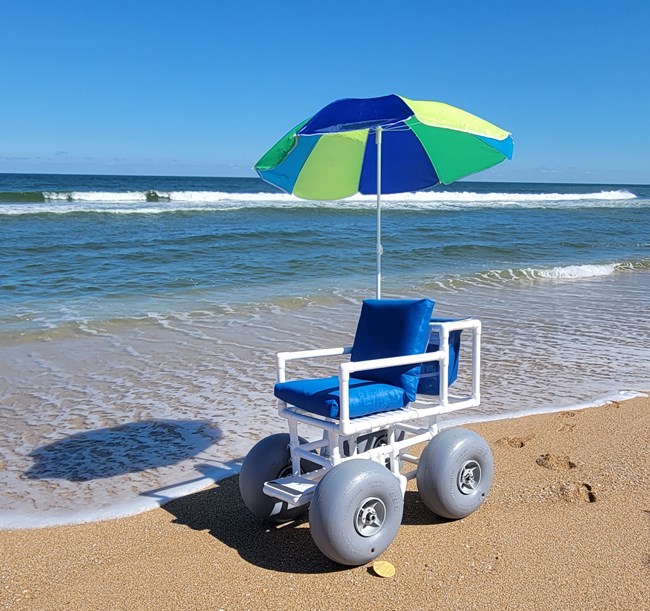
NPS Photo Apollo Beach WheelchairAt the Apollo Beach Visitor Center, a beach wheelchair is available to be checked out at the visitor center. It may be checked out for a period of two hours use at the beach access ramp located across the street from the visitor center. Turtle MoundTurtle Mound is one of the most significant archeological sites on the east coast of Florida. The mound is a treasure trove of artifacts, history and culture. It is composed primarily of oyster shells. Upon entering Apollo Beach the Turtle Mound parking area is approximately one half of a miles drive into the park on the right hand side of the road. The boardwalk leads from the parking area to the top of the mound. Stay on the path if you intend to reach the top of the mound. Once at the top three stopping points provide access to the north, south and west sides of the mound. 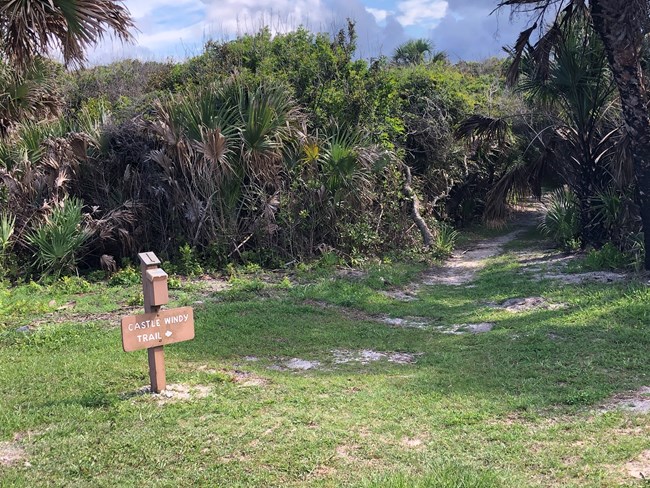
Castle Windy TrailCastle Windy Trail is a walking trail located at Apollo Beach parking area three. Park at beach parking area three and the trail is directly across the street. It leads across the barrier island ending at the Castle Windy archeological site located at the edge of the Mosquito lagoon. The path is nature ground path with some rooty spots. It can be navigated with a cane but a wheelchair would need all-terrain wheels. The ground is packed with a slight incline with the peaks at the middle of the trail. Take this path in the winter time to reduce the chance for mosquitoes. 
Seminole RestThere is a loop trail leading around the Seminole Rest Historic Site which is wheelchair accessible. It is approximately half a mile in length. A large portion of the path is a cement sidewalk, while the remainder is a wooden walkway that traverses across the top of the mound. This wooden portion has small inclines and declines while traversing fourteen feet of Timucua shell mound. The paved portion is relatively flat with one small incline as it encircles the base of the mound. There is one railing next to the first interpretive sign along the path. The rest of the path does not have railings. There are five benches to rest on placed strategically around the path near each of the informational interpretive signs. There is a dock located about halfway though the trail. The first half is a fixed piling dock with wooden railings. The second half includes a ramp that leads down to a floating dock that does not have railings. Located at the top of the mound are two historic homes. When the Seminole Rest main home is open it is accessible to enter the first floor. Please call the Apollo Visitor Center to check if the house is open before your visit at this phone number (386) 428-3384 . 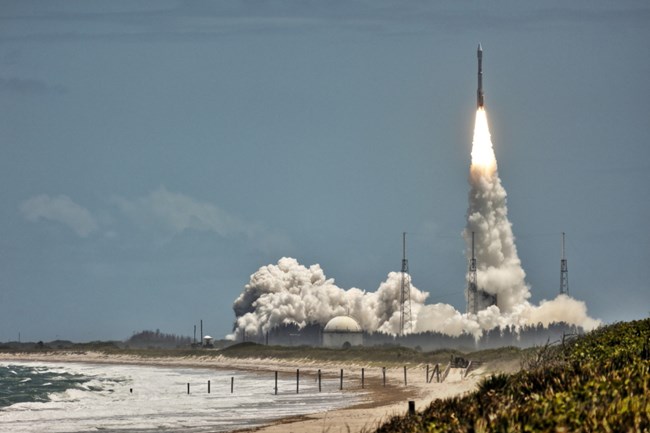
NPS Photo Playalinda BeachPlayalinda Beach is located at the southern end of Canaveral National Seashore just a stones throw away from the northern most rocket launch pads of Kennedy Space Center. There are vistas, which are vehicle pull offs to view the freshwater ponds and the rocket launch pads 39A and 39B. For beach access there are thirteen beach parking areas where all have accessibility parking spots located at the entrance of the beach access ramps. The first five beach ramps traverse a tall dune. Once you travel as far as parking area number eight, the beach dune is flat allowing for much easier beach access. 
NPS/Photo 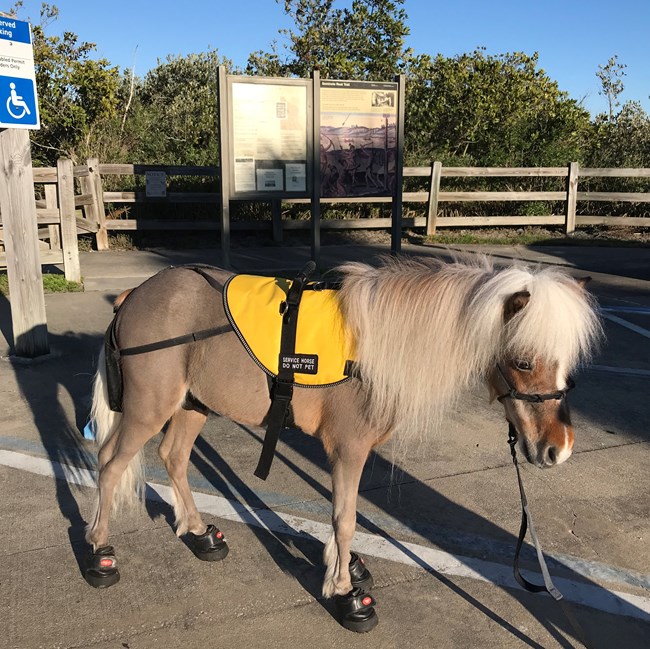
Service AnimalsService animals are allowed in all facilities and on all trails unless an area has been closed by the superintendent to protect park resources. Definition of Service AnimalNPS policy regarding service animals mirrors guidelines established by the Department of Justice. A service animal is defined as any animal that has been individually trained to do work or perform tasks for the benefit of an individual with a disability, including a physical, sensory, psychiatric, intellectual, or other mental disability. Things to KnowWhere domestic animals and wildlife overlap there is a possibility of exchanging diseases between the two groups. Domestic dogs can introduce disease into wildlife habitats and the park's canids (coyotes and foxes) are vulnerable to domestic diseases such as canine distemper, parvo virus, rabies, mange,etc. Likewise it is possible for domestic dogs to acquire these diseases from wild animals. To further prevent the spread of disease:
Blind & Partially SightedApollo Beach Audio TourApollo Beach has many exciting places to emplore. Listen to the following audio excerpts about the natural and hisitorical places to visit at Canaveral National Seashore. Enjoy your listening experience.
Visit our keyboard shortcuts docs for details
Explore Seminole Rest Historic Site's history and why it is preserved today. We hope that you enjoy your tour. |
Last updated: December 16, 2024

